Understanding Blockchain: Key Characteristics And The Layers That Make It Work.
 chioma christopher
chioma christopher
You’ve probably heard the buzz: Blockchain will change the world.😁 But beneath all the hype and headlines—what does it actually do? And more importantly, how does it work?
Let’s forget the complex whitepapers for a moment.
Instead, picture a simple story:
Solene wants to send a digital coin to Me 😁😁.
No banks. No middlemen. Just her, her wallet, and a decentralized system she trusts.
But here’s the twist — this system is run by thousands of strangers across the world.
None of them know Solene, yet they’ll verify her transaction, protect it from tampering, and ensure it lives forever on a public ledger.
Sounds like magic?
It’s not. It’s blockchain.
In this article, we’ll follow Solene’s transaction from start to finish—layer by layer—unpacking how blockchain really works.
What Are Blockchain Protocols?
Before we follow Solene's journey, let's quickly understand what blockchain protocols are.
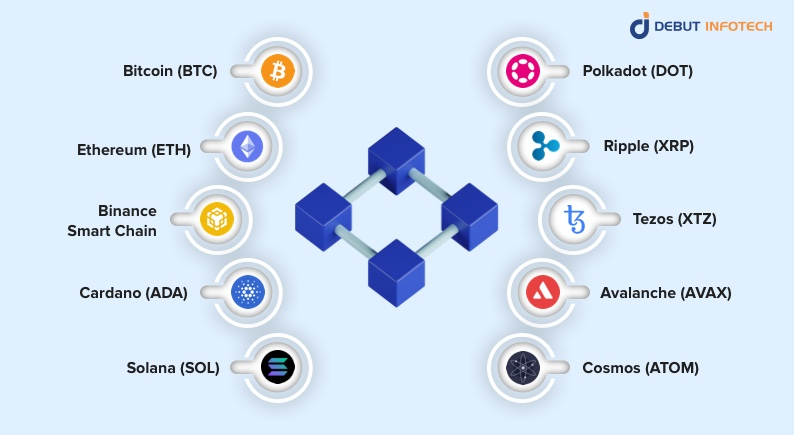
A blockchain protocol is like a recipe that all computers in the network must follow.
Just like a recipe ensures everyone can make the same cake, protocols ensure all computers handle transactions the same way.
Different blockchain networks have their own protocols—just like different families might have slightly different cake recipes.
Some examples include:
Bitcoin Protocol (for Bitcoin)
Ethereum Protocol (for Ethereum)
Polkadot, Solana, Avalanche, and so on...
Blockchain protocols determine:
How transactions are structured and validated
How computers (nodes) communicate
How blocks are added
How consensus is reached
The 5-Layer Journey of a Digital Coin
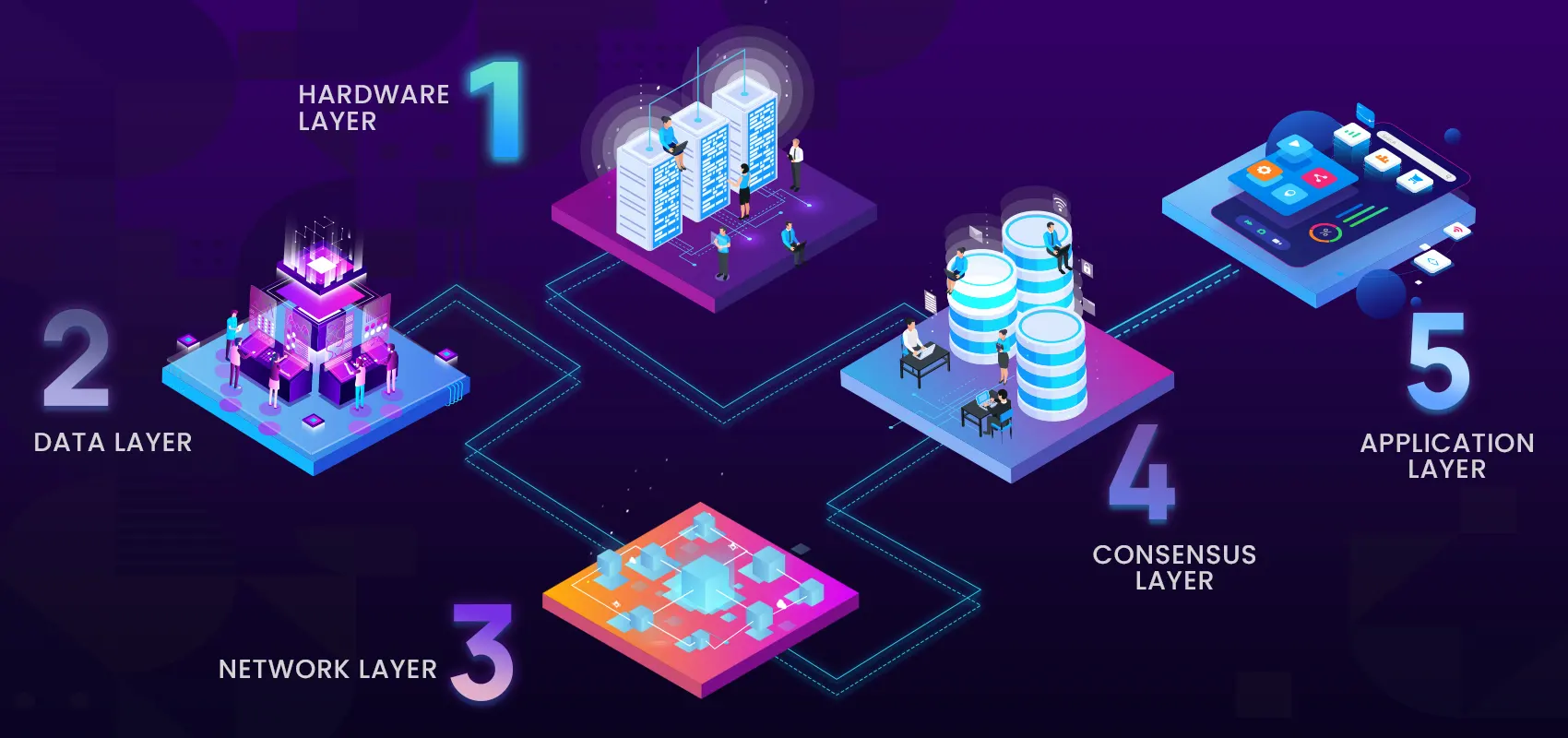
1. 💻 Application Layer
Solene clicks send on her phone

What happens:
Solene opens her digital wallet app, enters my address (a long string like ox78gc7...), inputs “1 coin,” and hits Send. Her private key signs the transaction like a digital signature, proving she owns the coin and authorizes the transfer.
Why it matters:
This is the user interface—where people interact with the blockchain without needing to understand the complex mechanics. It translates human intent into machine-readable actions.
Real-world analogy: Like writing and signing a check—easy to use but backed by a serious system underneath.
Key Functions:
Contains DApps (decentralized apps)
Wallets and APIs for interaction
Governance and voting mechanisms
This is where users and developers engage with the blockchain.
2. 🌐 Network Layer
The message spreads like wildfire
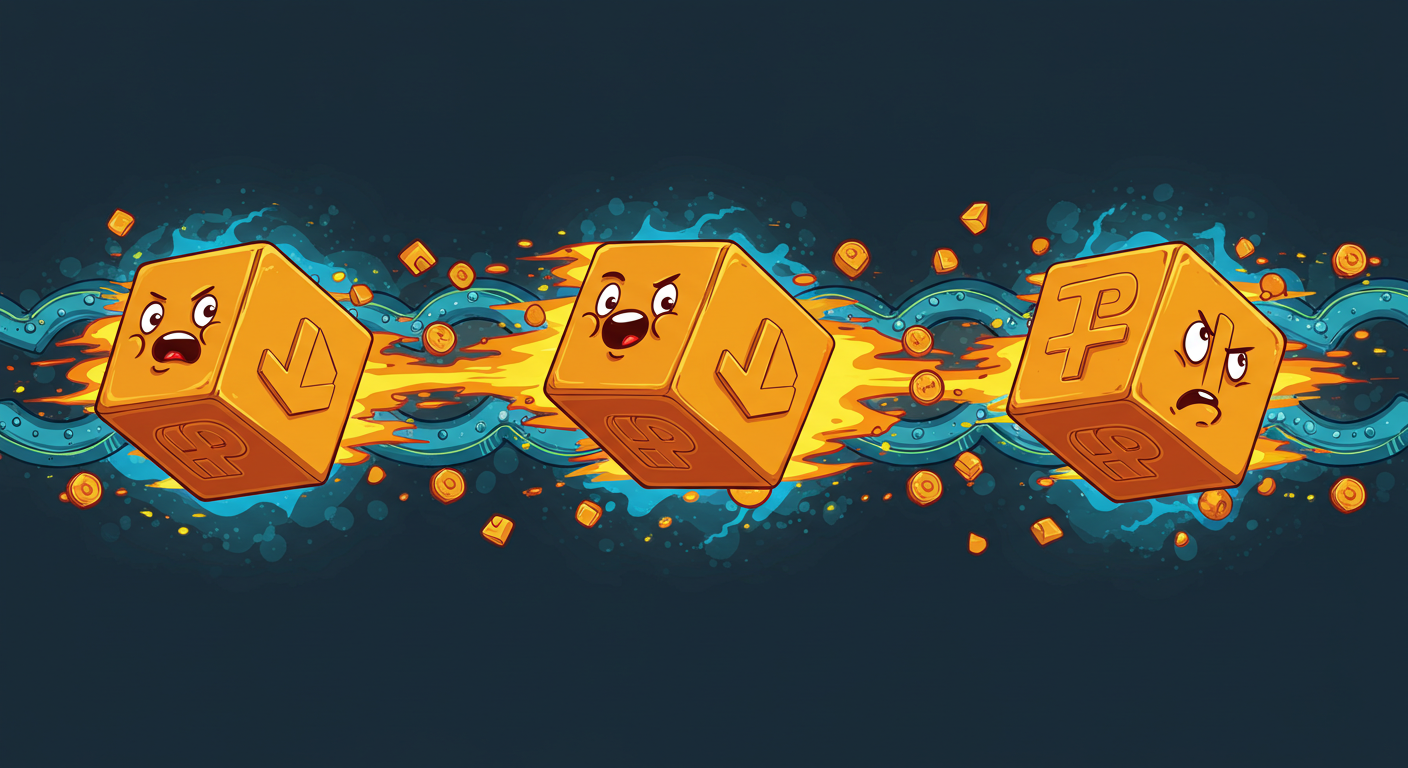
What happens:
Solene’s transaction is sent to nearby computers (nodes), which then broadcast it to others in the network. It spreads rapidly across the globe using a peer-to-peer (P2P) communication system.
Why it matters:
This layer ensures everyone in the network gets the same message. It's completely decentralized—no central server or authority decides what happens next.
Real-world analogy: Like gossip in a small town. One person tells three others, who each tell more, until everyone knows.
Key Functions: This layer ensures that all nodes in the system can:
Discover each other
Communicate securely
Share blockchain data (new transactions and blocks)
3. 🗳️ Consensus Layer
The network votes on what's true
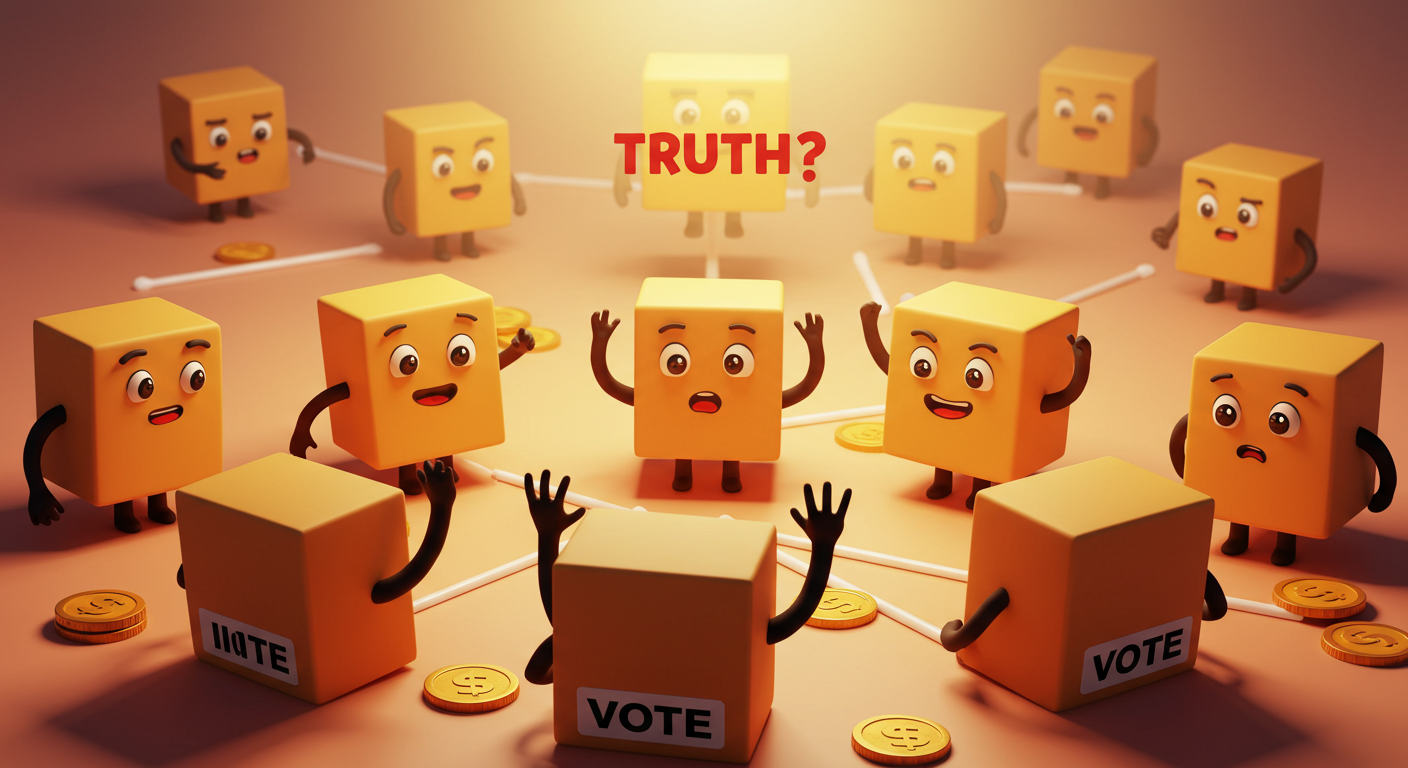
What happens:
Validators (or miners, depending on the protocol) gather pending transactions—including Solene’s—into a new block. They then either solve a puzzle (Proof of Work) or prove they have a stake (Proof of Stake) to propose the block. The rest of the network checks and agrees (or not).
Why it matters:
This is how the blockchain reaches agreement without a central judge. Fraudulent or duplicate transactions are rejected. Only valid blocks are accepted by the majority.
Real-world analogy: Like a jury trial where a majority must agree on the verdict before moving forward.
Key Functions:
Validates new blocks
Prevents double spending
Handles forks and selects the canonical chain
Common consensus algorithms:
Proof of Work (Bitcoin)
Proof of Stake (Ethereum 2.0, Cardano)
Delegated Proof of Stake (EOS)
Byzantine Fault Tolerance variants (Tendermint, HotStuff)
4. 🔗 Data Layer
Creating an unbreakable chain
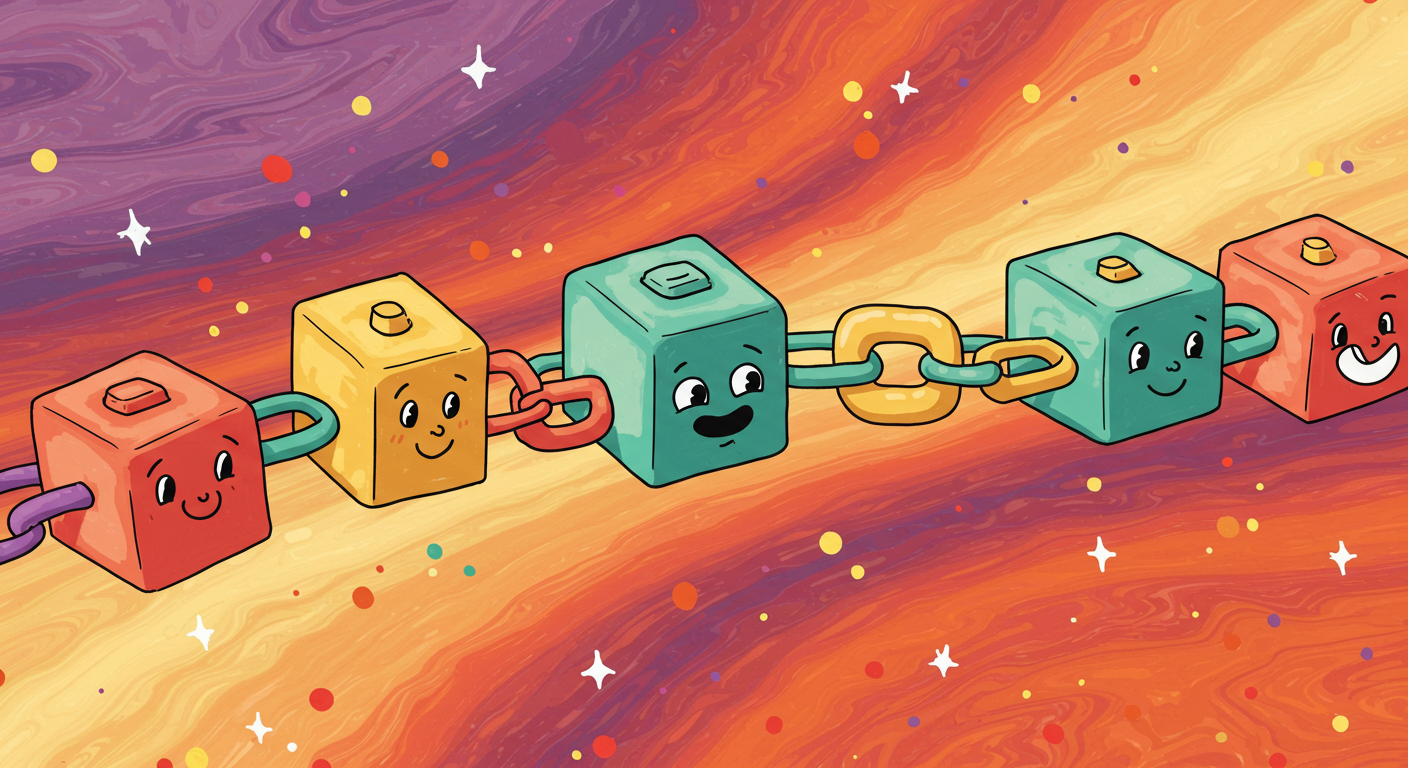
What happens:
Once validated, the block is added to the chain. Each block contains:
The hash of the previous block
A list of transactions (including Solene’s)
A timestamp
Its own unique hash
This hash links each block tightly to the one before it.
Why it matters:
This is what makes blockchain immutable. If you try to change a single transaction, the hash breaks—and everyone notices.
Real-world analogy: Like a diary where each page is numbered and references the last. Tear a page out, and the whole book becomes suspicious.
Key Functions:
Organizes data in a block-chain format
Links blocks cryptographically (via hashes)
Makes past records immutable
5. 🖥️ Hardware Layer
Thousands of computers keeping it alive
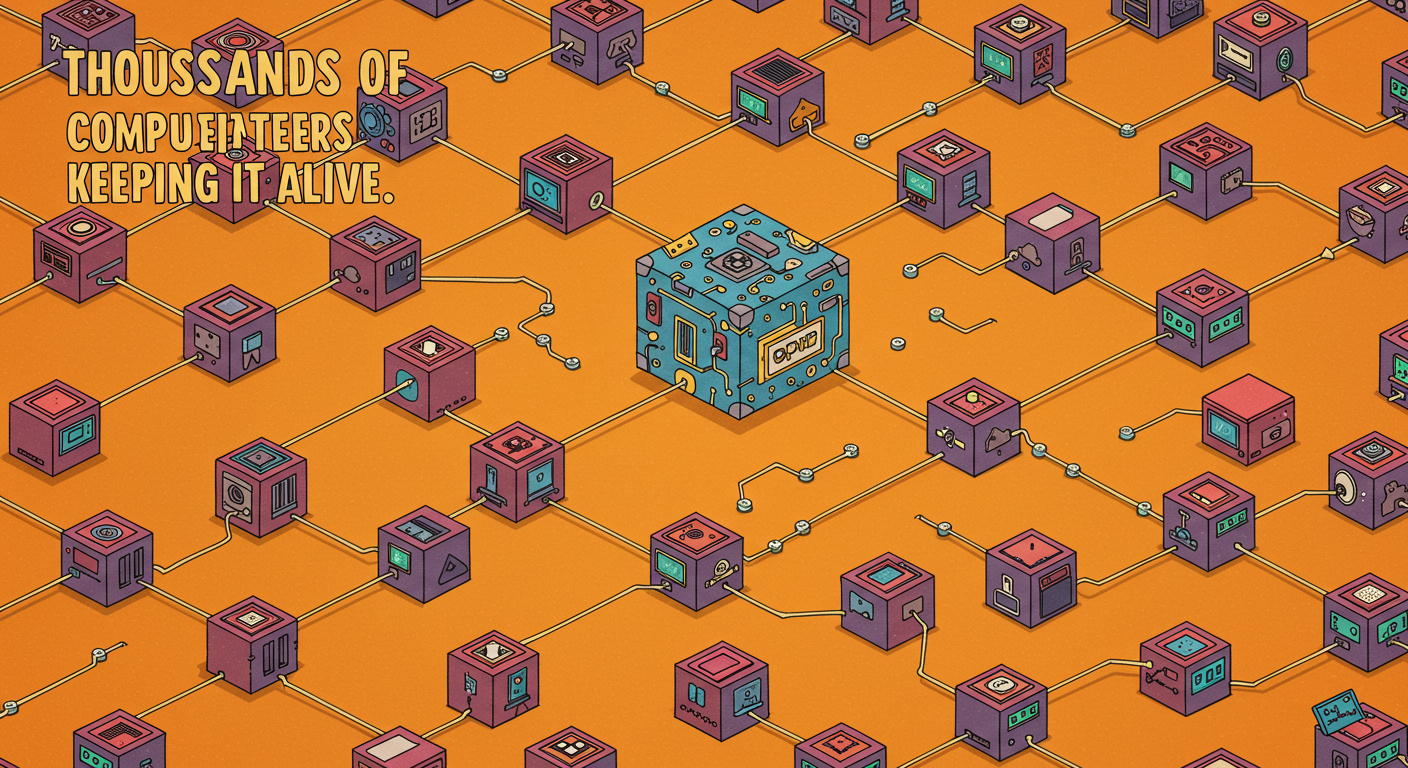
What happens:
The entire blockchain system runs on thousands of independent computers (nodes) across the world. These machines store full copies of the blockchain, validate transactions, and maintain uptime—even if others fail.
Why it matters:
This physical layer ensures decentralization. It eliminates single points of failure and makes the system highly resilient to attacks or outages.
Real-world analogy: Like having thousands of identical backups of an important document stored in different places.
Computers (called nodes) that participate in the network
Internet connectivity that allows communication
Storage systems to keep a copy of the blockchain data
In the Ethereum network, each full node stores a complete copy of the Ethereum blockchain.
The Key Characteristics Explained
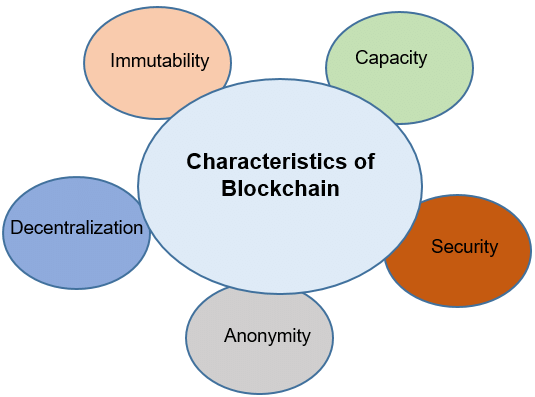
From Solene's transaction, we can observe the core blockchain properties:
Decentralized – No central control
Transparent – Everyone can verify
Immutable – Tamper-proof
Secure – Cryptography ensures it
Trustless – Runs on rules, not humans
How the Layers Work Together
Decentralization
Unlike banks, blockchains are owned by no one—and run by everyone.
Transparency
Anyone can check if:
Solene had the coin
The signature was valid
The transaction reached Me
Immutability
Once it’s recorded, it’s permanent.
Consensus
Accepted only if most nodes agree.
📋 Recap: Solene's Transaction, Layer by Layer
| Layer | Role in Solene’s Story |
| Application | Lets her send and track the coin via an app |
| Network | Broadcasts her transaction to the blockchain |
| Consensus | Gets agreement from the network that it's valid |
| Data | Records it permanently in an unchangeable block |
| Hardware | Ensures the blockchain keeps running worldwide |
Bonus: What Are the Components of a Blockchain?
Before we wrap up, it’s helpful to understand that every blockchain — including Ethereum, Bitcoin, and others — is made up of core components. These are the building blocks that allow it to work securely, just like the layers we saw in Solene’s story.
While many blockchains share similar components, they can vary depending on their design, use case, and consensus mechanism.
Common Components of a Blockchain System
| Component | What It Does | Related Layer(s) |
| Node | A computer that participates in the network and verifies transactions | Hardware, Network |
| Ledger | The database that stores all transactions and blocks | Data Layer |
| Smart Contracts | Code that runs on the blockchain to automate agreements | Application Layer |
| Consensus Mechanism | Rules for how nodes agree on the state of the blockchain | Consensus Layer |
| Wallet | Interface for users to send, receive, and store digital assets | Application Layer |
| Cryptographic Hash | Converts data into a fixed-length fingerprint to ensure integrity | Data Layer |
| Token or Coin | The digital currency used for transactions and incentives | Application, Protocol |
💡 Fun Fact:
Ethereum and Bitcoin both have nodes, wallets, and ledgers—but Ethereum also supports smart contracts, while Bitcoin focuses mostly on simple payments.
So yes — blockchains can have different components or prioritize some over others, but they all share the same fundamental goal: ensuring secure, trustless, decentralized value exchange.
✅ Conclusion: Solene’s One Coin, Secured by Layers
Solene’s one click went through five powerful layers Application → Network → Consensus → Data → Hardware
All of them working behind the scenes to make it secure, valid, and permanent.
Blockchain isn’t just tech.
It’s rules + trust + global cooperation, baked into one system.
Thanks for reading 🤗
Feel free to drop your thoughts or questions in the comments!
Subscribe to my newsletter
Read articles from chioma christopher directly inside your inbox. Subscribe to the newsletter, and don't miss out.
Written by
